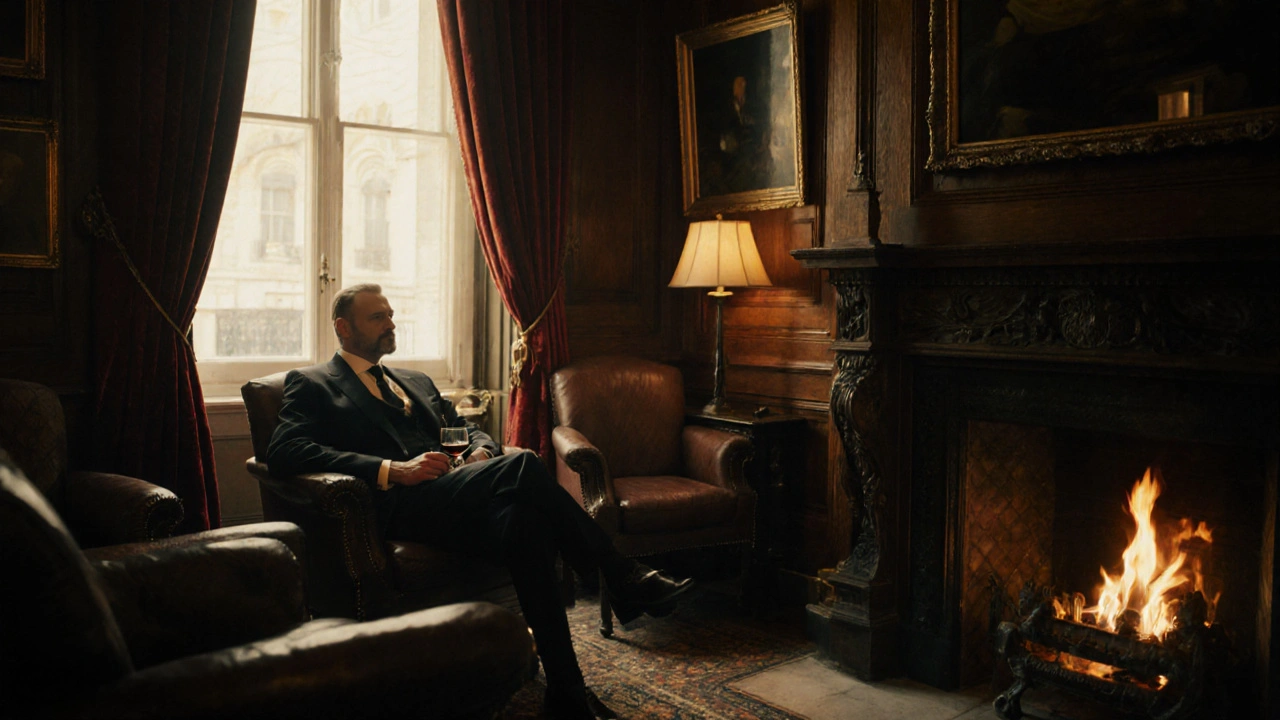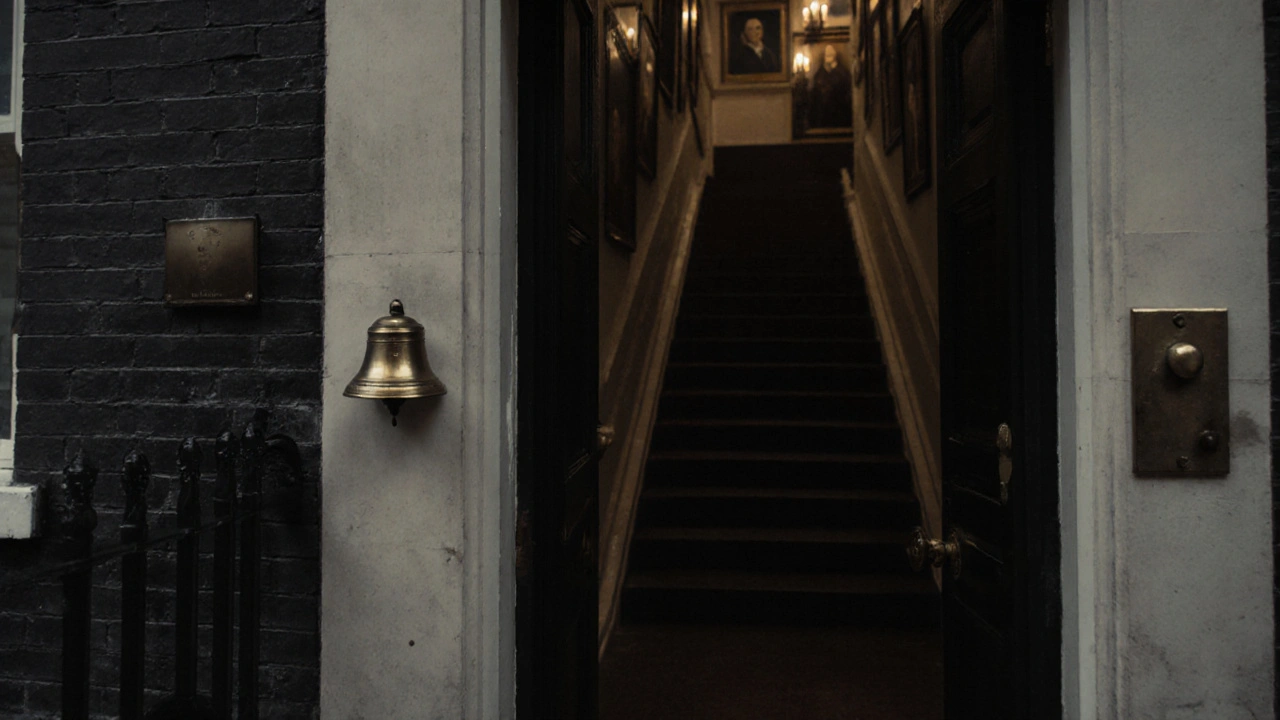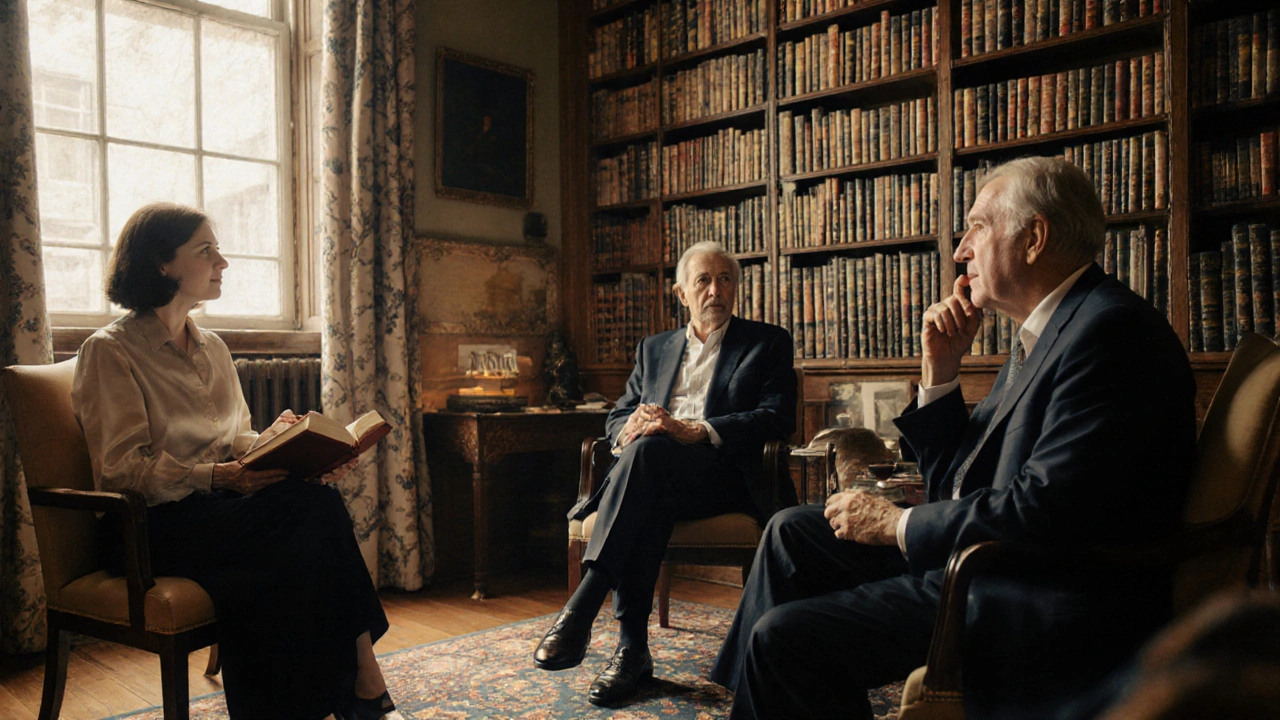
Walk past a plain door on a quiet street in Mayfair or St James’s, and you might see no sign, no window, no hint that behind it lies one of the most tightly guarded social spaces in the world. No menus. No price lists. No public hours. Just a discreet bell, a bouncer who knows your face, and the quiet hum of a room where power, history, and privilege quietly overlap. These aren’t restaurants. They aren’t bars. They’re private members’ clubs - the secret heartbeat of London’s elite social scene.
What Exactly Is a Private Members’ Club?
A private members’ club isn’t just a fancy pub with a membership fee. It’s a curated space designed for connection, not commerce. Think of it as a home away from home - but only for those who’ve been invited in. Unlike hotels or restaurants, these clubs don’t chase profit. They chase reputation. And reputation here is built over decades, sometimes centuries.
Membership isn’t bought. It’s earned. Or, more accurately, it’s recommended. You need a current member to sponsor you. Then you wait. Sometimes months. Sometimes years. There’s no online application. No credit card payment portal. Just a quiet conversation, a handshake, and a sense that you belong - not because you can pay, but because you’re known.
These clubs offer more than drinks and dinner. They offer silence. Privacy. Trust. In a city where everyone is always on, these spaces are designed to be off. No phones at the table. No loud music. No tourists taking selfies by the fireplace. Just a room full of people who’ve chosen to be together - not because they have to, but because they want to.
The History Behind the Doors
London’s private clubs didn’t start as luxury hangouts. They began as intellectual havens. In the 1700s, gentlemen gathered in coffee houses to debate politics, science, and art. Over time, these spaces became too crowded, too noisy. So the elite built their own - quiet, controlled, exclusive. The White’s is the oldest, founded in 1693. Originally a chocolate house, it became a gambling den, then a political hub. By the 1800s, it was where the Duke of Wellington and Lord Byron hashed out empire policy over port.
The Brooks’s, opened in 1764, was the rival to White’s - more Whig, less aristocratic, but just as strict. Its members included Charles James Fox and William Pitt the Younger. These weren’t just social clubs. They were power centers. The decisions made over dinner here shaped laws, wars, and colonial policy.
Today, the same buildings still stand. The same oak paneling. The same leather armchairs. The same rules. You still can’t bring a guest without permission. You still can’t wear jeans. You still can’t take a photo. The rules haven’t changed because they’re not about fashion - they’re about control. Control over who enters. Control over what’s said. Control over who gets to be part of the story.

Who Gets In - And Why It’s Not Just About Money
Yes, you need money. Membership fees range from £2,000 to £15,000 just to apply. Annual dues can be another £1,000 to £5,000. But money alone won’t get you in. You need credibility. You need a track record. You need someone who already belongs to vouch for you.
At The Reform Club, founded in 1836 for supporters of the Great Reform Act, members include judges, diplomats, and senior civil servants. At The Athenaeum, founded in 1824 for men of science and literature, you’ll find Nobel laureates, authors, and academics. Even today, a tech founder won’t get in unless they’ve published a book or led a major research project.
There are exceptions. The Arts Club, opened in 1863 by Charles Dickens and other artists, welcomes creatives - actors, painters, filmmakers. Soho House, founded in 1995, broke the mold by letting in media moguls and musicians. But even Soho House has a vetting process. You can’t just pay and walk in. You need a reference. You need to be seen as someone who adds value to the room.
The real currency here isn’t cash. It’s influence. And influence isn’t something you can buy. It’s something you build - over years, over projects, over quiet acts of leadership.
What You Actually Get - Beyond the Champagne
What do members really get? It’s not the food. It’s not the wine. It’s not even the private dining rooms.
It’s access.
Access to a library with first editions you can’t find anywhere else. Access to a quiet room where you can take a business call without being overheard. Access to a chef who remembers how you take your eggs. Access to a network of people who’ve run companies, written laws, directed films - and who might just introduce you to the right person at the right time.
At The Travellers Club, members can stay overnight in rooms that haven’t changed since the 1920s. At Boodle’s, you can play chess with a retired general while sipping single malt. At The Groucho, you can meet a film director who’s just finished shooting in Morocco - and get invited to the premiere.
These aren’t just places to eat. They’re places where careers are made. Deals are whispered. Books are pitched. Relationships are forged - not in boardrooms, but over a shared bottle of claret and a long silence.

The Changing Face of Exclusivity
For years, these clubs were male-only. White’s didn’t admit women until 1981. Brooks’s followed in 1983. The Athenaeum didn’t open its doors to women until 1999. That’s not just outdated - it’s a relic of a time when power was defined by gender and class.
Today, the shift is real. The Arts Club has had female chairs since the 1990s. SoHo House was built by a woman, and half its members are now women. Even the old guard is changing. The City of London Club now has a female president. The rules are still strict - but the people behind them are different.
There’s also a new wave of clubs emerging. Co-Op, founded in 2020, is a hybrid - part co-working space, part members’ club. It’s open to freelancers, founders, and creatives. No velvet ropes. No dress code. But you still need a referral. The exclusivity isn’t about wealth anymore. It’s about intention.
Exclusivity isn’t disappearing. It’s evolving. The old clubs still hold their ground. But now, there’s space for new kinds of belonging - based on creativity, not just capital.
Why This Matters - Even If You’re Not a Member
You don’t need to join one of these clubs to understand why they matter. They’re a mirror. They show us what people value when money isn’t the only thing that counts.
In a world where everything is public - where your lunch, your vacation, your opinion is posted for likes - these clubs are the last true private spaces. They’re proof that connection doesn’t always need to be broadcast. That trust can be quiet. That influence doesn’t always come with a follower count.
They remind us that some things are still earned - not bought. That belonging isn’t about how much you spend, but how you show up. That the most valuable things in life - relationships, reputation, respect - can’t be found on a menu. They’re built over time, in silence, with people who’ve chosen to be there - together.
So the next time you walk past a plain door in London, don’t assume it’s just another closed shop. Behind it might be a room where history is still being made - quietly, carefully, and only for those who’ve earned the right to sit down.
Can anyone join a private members’ club in London?
No. Membership is by invitation only. You need a current member to sponsor you, and then you go through a vetting process. There’s no public application form. Even if you can afford the fees, you won’t be accepted unless you’re known in the right circles.
How much does it cost to join a London private club?
Entry fees range from £2,000 to £15,000, depending on the club. Annual dues are typically £1,000 to £5,000. Some clubs, like Soho House, charge more for international members. But fees are only part of the cost - the real price is the time and reputation you need to build before even applying.
Are private members’ clubs only for the wealthy?
Not anymore. While money helps, influence matters more. A novelist, scientist, or filmmaker with a strong reputation can get in even if they’re not rich. Clubs like The Athenaeum and The Arts Club value contribution over cash. The old model of wealth-only access is fading - replaced by a focus on merit and impact.
Do private clubs still have dress codes?
Yes, most do. Traditional clubs like White’s and Brooks’s require jackets and ties for dinner. Soho House is more relaxed but still asks for smart casual. Jeans and trainers are usually banned. The dress code isn’t about snobbery - it’s about maintaining a certain atmosphere. It’s a signal: this space is different.
Can you visit a private club as a guest?
Yes - but only if you’re invited by a member. Guests can’t just walk in. They must be signed in, and their visit is usually limited to one or two days. Some clubs allow guests for meals but not overnight stays. The rules vary, but the principle is the same: you don’t get in unless someone vouches for you.
Are there any private clubs open to the public?
No - not truly. Some clubs offer limited public access for events, like art shows or talks, but these are exceptions. Even then, you still need to be invited. The core experience - dining, staying overnight, using the library - is always restricted to members. That’s what makes them private.
Why do people still join these clubs in the digital age?
Because in a world of noise, silence is rare. In a world of public profiles, privacy is valuable. Members join not to show off, but to disappear - to talk without being recorded, to think without being judged, to connect without being marketed to. These clubs offer what social media never can: real, unfiltered human connection.